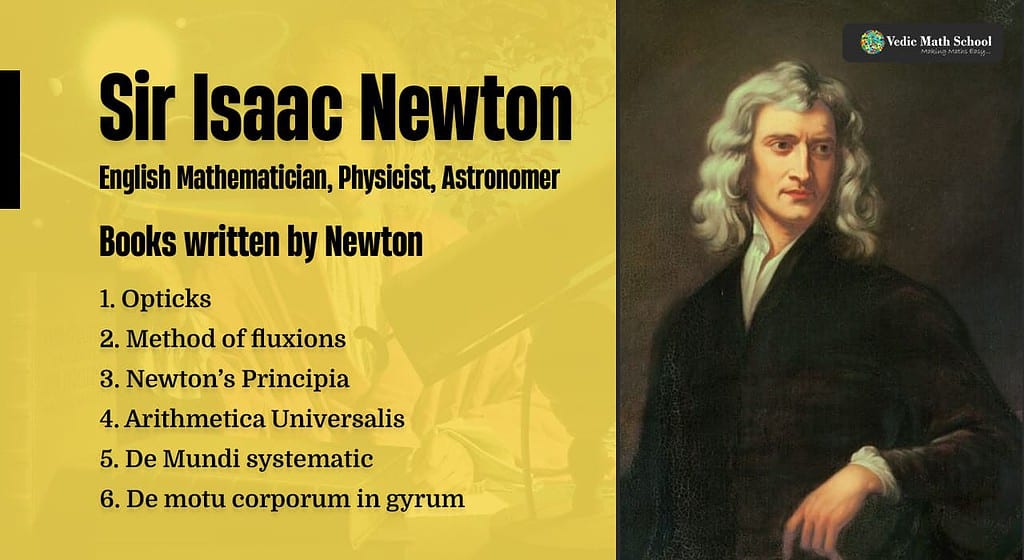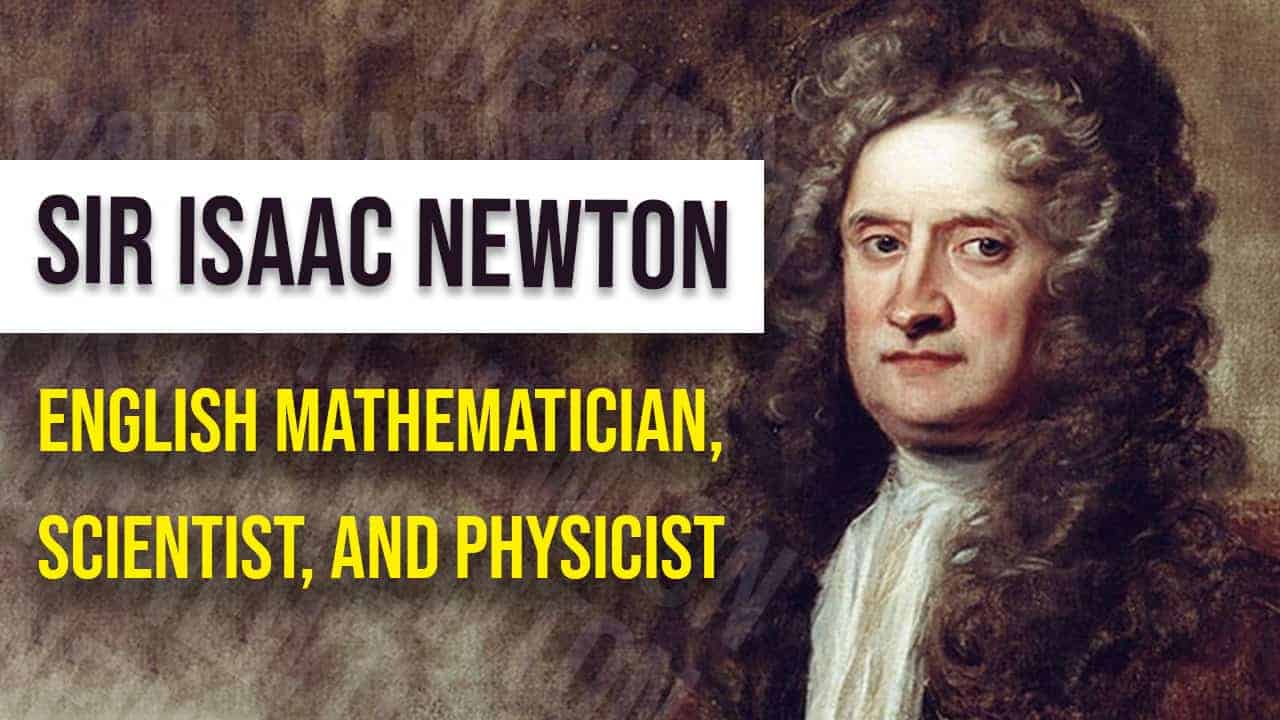Sir Isaac Newton does not need any kind of introduction. Because he was one of the greatest personalities who ever lived on this earth. Newton is a very renowned English mathematician, scientist, and physicist.
If you ever went to school for study then you will definitely know that Newton = Gravity. This is every school-going child’s first interaction with Newton.
But this is not the only feather in his hat. He discovered more things like the law of motion, binomial theorem series, and the law of planetary motion, etc.
Time and place of birth
Sir Isaac Newton was born on 4 January 1643, in Woolsthorpe, Lincolnshire, England.
Archimedes Early life
Sir Isaac Newton was one of the greatest personalities born with the greatest irony also. Because how many times do you see a son with the same name as his father? Newton’s father’s name was also Isaac Newton and his mother’s name was Hannah Ayscough.
Newton’s father died three months after his birth and his mother left him at the age of three years. Newton’s mother left him to marry a rich minister named Barnabas Smith.
After this, he lived with his maternal grandmother from the age of 3 to 12 till the death of his stepfather. After his stepfather’s death, Newton lived with his mother.
When Newton Sir Isaac was a 17 years old boy his mother removed him from school. But after understanding his son’s interest he gave permission to Newton to resume his studies.
Adulthood
Newton Sir Isaac grew up studying in different colleges for higher studies. He spent his whole life studying, researching, and discovering new things. He was never married. Although there are many rumors about his relationships.
But he was not so sensitive towards these things. As an adult man, Newton spent most of his time lonely in his lab. In the last days of his life, he lived with her niece and her husband.
Must Read These Also.
- Paul Joseph Cohen: From being an immigrant to the mathematical legend of the USA
- Edward Lorenz: American Mathematician and Meteorologist
Death
Newton died on 31 March 1727, in Kensington, Middlesex, England. He was buried in Westminster, London.
Education and career
At the age of 12, Newton first saw a school called King’s School, Grantham. After that in 1661, he took admission to Trinity College, London, pursuing a graduate degree.
In this college, he got a scholarship in 1664 that grants him four additional years in college for completing his M.A. In the year 1665, he discovered the binomial theorem and started working on calculus. He became a professor of maths in 1669.
Newton Sir Isaac became a Fellow of the Royal Society in 1672 after four years of his M.A. He was a two times Parliament member once in 1689 and the second time in 1701. In 1696 he became warden of the Royal Mint and moved to London for this responsibility.
1703 was his year because in this year he became the president of the royal society and an associate of France’s academy of science. In 1705 the Queen of Great Britain gave him Knighthood and he became Sir Isaac Newton thereafter.
Must Read These Also.
- Blaise Pascal was a French mathematician, physicist, inventor, philosopher, writer and Catholic theologian
- Claudius Ptolemy was a mathematician, astronomer, natural philosopher, geographer
Interesting facts about Newton
- Isaac Newton and his father’s name were the same, Isaac Newton.
- Newton never married.
- His mother never liked his interest in studies; she wanted him to be a farmer. This was the reason why he left school in his teenage years.
- Newton’s famous discovery Gravity was caused by the bubonic plague. Yes, after the spread of this pandemic in England, he returned home and discovered Gravity under the Famous apple Tree of his Garden.
- He was a two times member of Parliament.
Mathematical Achievement
In mathematics, Sir Isaac Newton had many achievements in his name. He was the founder of calculus, he found the binomial theorem, he also found Newton’s method for solving equations. He discovered the Newton-Gauss line and Newton line in geometry. He also discovered Newton’s Identities.
Contribution in Mathematics
Newton contributed a lot in maths a little portion of it is here.
Calculus
Calculus is the study of continuous change like geometry is the study of shapes. So we can say that calculus is the study of continuous changes.
Must Read These Also.
- Pierre de Fermat was a French mathematician who is given credit for early developments
- Thales of Miletus : Greek mathematician, astronomer and Pre-Socratic Philosopher
Newton-Gauss line
In geometry, a Newton-Gauss line is that which joins the midpoints of three diagonals of a complete quadrilateral.
Newton line
A Newton Sir Isaac line is a line that connects the midpoints of two diagonals in a convex quadrilateral with almost two parallel sides.
Newton’s method
Newton’s equation is based on the geometry of curves, using the tangent lines of curves.
Newton’s identities
Newton’s identities give a relation between two types of polynomials. The first one is power sums and another one is elementary symmetric polynomials.
Binomial theorem
The binomial theorem expresses the algebraic expansion of a binomial in elementary algebra.
Books written by Newton
- Philosophiae Naturalis Principia Mathematica
- Opticks
- Observations upon the prophecies of Daniel, and Apocalypse of st. John
- The chronology of ancient kingdoms amended
- Method of fluxions
- Newton’s Principia
- A historical account of two notable corruptions of scripture
- Arithmetica Universalis
- De Mundi systematic
- De motu corporum in gyrum

Read More : Alexander Grothendieck
Awards and rewards
- In 1672 Newton was selected as an (FRS) Fellow of the Royal Society and in 1703 he was selected as the president of this society.
- In 1705 the queen of Britain gave him Knighthood. This is the biggest honor for a British.
Must Read These Also.
- Mihailo Petrovic Alas a Serbian mathematician
- Diophantus of Alexandria was an Alexandrian mathematician
Quotes by Newton
Errors are not the arts but in the artificers.
Tact is the knack of making a point without making an enemy.
Isaac Newton
To every action, there is always opposed an equal reaction.
If I have seen further than others, it is by standing upon the shoulders of giants.
FAQ
What is Newton famous for?
Newton Sir Isaac is famous for his discovery of Gravity.
Did Isaac Newton have kids?
No, Newton did not have kids.
Was Isaac Newton married?
No, he never married.
What language did Newton speak?
English, Latin, and Greek.
Is the apple tree of Newton still alive?
Yes, this tree is still alive.
See also
England is home to many great mathematicians like John Venn, Ada Lovelace, G.H. Hardy but Newton was the greatest in all of them.




